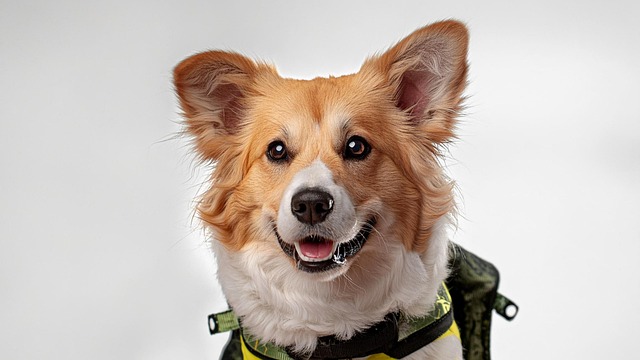Teaching a dog to drop down—lying flat on their belly with legs extended—is a useful command that builds focus and strengthens your bond, though it can feel trickier than "sit" or "stay" for some pups. The key is breaking the behavior into small, rewarding steps, tailored to your dog’s energy level and breed traits. Start in a quiet room free of distractions—think a closed living room rather than a busy kitchen during mealtime. Have high-value treats on hand; small pieces of cooked chicken or freeze-dried liver work better than generic kibble, especially for food-motivated breeds like Labradors or Cocker Spaniels.
Begin with a dog who already knows "sit." Hold a treat close to their nose, then slowly lower it toward the floor between their front paws. Most dogs will follow the treat down with their head, but if their elbows stay locked (common in stubborn breeds like Bulldogs or Dachshunds), gently guide their chest toward the ground with your free hand. The moment their belly touches the floor, say "drop" in a clear, upbeat tone and offer the treat. Repeat this 5–6 times per session—short bursts prevent boredom, which is crucial for energetic breeds such as Border Collies or Australian Shepherds, who might lose interest after 10 minutes.
If your dog resists lowering their body, try luring them from a standing position instead. Move the treat from their nose down to the floor, then slide it forward a few inches. This encourages them to stretch out rather than just crouch. For dogs with joint issues, like older German Shepherds or larger breeds prone to hip dysplasia, keep training sessions on soft surfaces like a yoga mat to reduce strain. Always stop if your dog shows signs of discomfort—whining or tensing up is their way of saying take a break.
 Consistency in verbal cues matters. Stick to one command word—"drop," "down," or "flat"—and avoid mixing them, as this confuses dogs. In the UK, many trainers prefer "down" to avoid confusion with "lie down," but regional variations are fine as long as everyone in the household uses the same term. Pairing the command with a hand signal—like pointing to the floor—can speed up learning, especially for deaf dogs or those more visually oriented, such as sight hounds like Greyhounds or Whippets.
Consistency in verbal cues matters. Stick to one command word—"drop," "down," or "flat"—and avoid mixing them, as this confuses dogs. In the UK, many trainers prefer "down" to avoid confusion with "lie down," but regional variations are fine as long as everyone in the household uses the same term. Pairing the command with a hand signal—like pointing to the floor—can speed up learning, especially for deaf dogs or those more visually oriented, such as sight hounds like Greyhounds or Whippets.
Once your dog reliably drops on cue in a quiet room, gradually add distractions. Start with a toy placed a few feet away, then progress to training near a open door or with mild noises, like a TV in the background. This mimics real-world scenarios, such as asking them to drop during a walk when a squirrel darts by. For reactive dogs—those who get overexcited around other people or pets—this step is vital for safety. In many U.S. states, including Colorado and Oregon, having a dog under voice control in public spaces is required by law, and "drop" can help calm them in crowded areas like parks or sidewalks.
Reward timing is everything. Deliver the treat within 2 seconds of the behavior to reinforce the connection between dropping and getting a reward. As your dog improves, phase out treats gradually—offer praise ("Good drop!") or a quick play session with a favorite toy instead. This prevents dependency on food rewards, which is especially important for breeds prone to obesity, like Beagles or Basset Hounds.
Mistakes happen, even with patient training. If your dog jumps up instead of dropping, ignore the unwanted behavior—no scolding, which can create anxiety. Wait 10 seconds, then try again with a slower lure. Some breeds, like Shih Tzus or Pekingese, may take longer due to their shorter legs and independent streaks; celebrate small wins, like lowering their chest an inch, to keep motivation high. A 2021 study by the University of Pennsylvania’s School of Veterinary Medicine found that positive reinforcement training reduces stress hormones in dogs by 30% compared to punishment-based methods, so stay upbeat even when progress feels slow.
Incorporate training into daily routines. Practice "drop" before meals, when your dog is most focused, or during commercial breaks while watching TV. For working breeds like Rottweilers or Doberman Pinschers, this command taps into their desire to please, strengthening their role as a cooperative partner. Remember, training should feel like a game—if either of you gets frustrated, take a 10-minute break and return with fresh energy.
By 8–12 weeks of consistent practice (10–15 minutes daily), most dogs will respond to "drop" on command in various settings. Always check local regulations—for example, in Germany, dogs in public must respond to basic commands under the Federal Animal Welfare Act, and "drop" can be part of that compliance. With patience and positive reinforcement, this skill becomes second nature, enhancing both your dog’s obedience and your shared adventures.

 Consistency in verbal cues matters. Stick to one command word—"drop," "down," or "flat"—and avoid mixing them, as this confuses dogs. In the UK, many trainers prefer "down" to avoid confusion with "lie down," but regional variations are fine as long as everyone in the household uses the same term. Pairing the command with a hand signal—like pointing to the floor—can speed up learning, especially for deaf dogs or those more visually oriented, such as sight hounds like Greyhounds or Whippets.
Consistency in verbal cues matters. Stick to one command word—"drop," "down," or "flat"—and avoid mixing them, as this confuses dogs. In the UK, many trainers prefer "down" to avoid confusion with "lie down," but regional variations are fine as long as everyone in the household uses the same term. Pairing the command with a hand signal—like pointing to the floor—can speed up learning, especially for deaf dogs or those more visually oriented, such as sight hounds like Greyhounds or Whippets.



